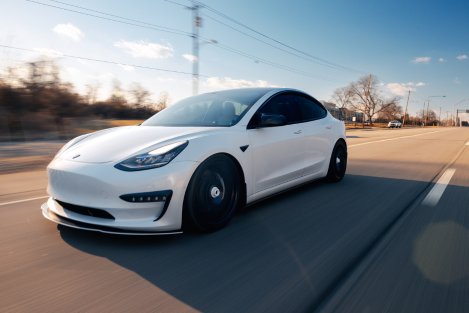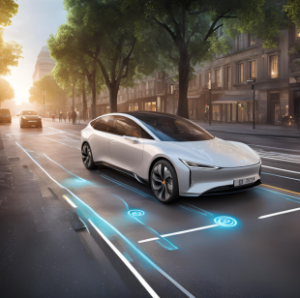Introduction
In recent years, self-driving cars have transitioned from a futuristic dream to a tangible reality. What was once portrayed in science fiction is now on the verge of becoming an everyday aspect of modern life. These vehicles promise a world where commuting is safer, more efficient, and accessible to all. With numerous tech giants, car manufacturers, and startups pouring resources into autonomous vehicle research, we are on the precipice of a transportation revolution. But as their development accelerates, so does the debate surrounding their reliability. Are self-driving cars truly the safer alternative, or do they come with risks we’re not yet ready to face?
As technology continues to evolve, the question remains: Can autonomous vehicles be trusted to safely navigate the roads, or will their development be an experiment in progress, fraught with unforeseen complications? In this article, we explore the promises, current safety concerns, regulatory challenges, and the potential future of self-driving cars, aiming to assess whether these vehicles can truly live up to their transformative potential.
The Promises of Self-Driving Cars
Self-driving cars, also known as autonomous vehicles (AVs), hold the potential to revolutionize transportation by addressing one of its greatest flaws: human error. According to the National Highway Traffic Safety Administration (NHTSA), human mistakes account for a staggering 94% of road accidents in the United States. These statistics make a compelling case for the introduction of autonomous systems that rely on sophisticated sensors, cameras, and artificial intelligence (AI). Proponents argue that self-driving cars can eliminate common causes of accidents such as distracted driving, fatigue, and impaired driving by removing the human element entirely.
Autonomous vehicles are equipped with advanced technology, including radar, lidar (light detection and ranging), ultrasonic sensors, and cameras, all of which work together to provide a 360-degree view of the car’s surroundings. These technologies enable the vehicle to perceive objects, pedestrians, and other hazards with remarkable accuracy, making it possible for the car to react faster and more consistently than humans. For example, a self-driving car can process thousands of pieces of data per second, identifying obstacles and making split-second decisions based on real-time information.
Beyond safety, self-driving cars could dramatically enhance mobility for underserved populations, including elderly individuals, people with disabilities, and those who otherwise struggle with traditional vehicles. Many of these individuals face significant barriers to transportation, and the arrival of autonomous vehicles could offer newfound independence, allowing them to travel without relying on others. This could significantly improve their quality of life, offering greater autonomy and access to essential services like healthcare and shopping.
In addition to improving individual mobility, self-driving cars also have the potential to reduce traffic congestion, optimize fuel consumption, and lower greenhouse gas emissions. Through real-time navigation and the ability to communicate with other vehicles, autonomous vehicles can help streamline traffic flow, preventing congestion caused by human error and inefficiency. By coordinating travel times and routes, AVs can reduce the number of vehicles on the road at any given time, leading to less pollution and smoother commutes for everyone.
The environmental benefits are particularly promising. Self-driving cars can be designed to maximize fuel efficiency and reduce emissions. Many autonomous vehicle programs, like those led by Tesla and other electric vehicle manufacturers, are paired with electric powertrains that reduce reliance on fossil fuels. As more of the world transitions to electric vehicles, self-driving technology could play a crucial role in making transportation more sustainable in the long term.
Current Safety Concerns
Despite the numerous promises, self-driving cars still face significant safety challenges. One critical issue lies in the limitations of the sensors and software that power these vehicles. While autonomous vehicles are equipped with advanced technologies that enable them to “see” and react to their surroundings, these systems are not flawless. For example, inclement weather such as heavy rain, snow, or fog can obscure cameras, lidar, and radar systems, impairing a vehicle’s ability to perceive its environment. In low-visibility conditions, autonomous cars may struggle to identify key obstacles, such as pedestrians or other vehicles, which could lead to accidents.
In addition to weather-related challenges, self-driving cars may encounter unpredictable or rare road scenarios that are difficult for AI systems to interpret. For instance, a pedestrian suddenly darting into traffic or a driver making an erratic move can push AI systems to their limits, resulting in a failure to react appropriately. While these kinds of events are rare, the complexity of real-world situations can create vulnerabilities for self-driving cars, and it remains uncertain how well autonomous systems will handle such edge cases.
Another pressing safety concern is the potential for hacking and cybersecurity risks. Autonomous vehicles rely heavily on software and internet connectivity, creating new vulnerabilities for malicious actors. A well-coordinated cyberattack could potentially take control of an entire fleet of autonomous vehicles, putting passengers and pedestrians at risk. As the technology evolves, it will be essential for manufacturers and tech companies to implement robust security measures to safeguard against such threats.
Perhaps the most significant safety concern surrounding self-driving cars, however, is the question of accountability. If an accident occurs involving an autonomous vehicle, who is to blame? While human drivers can be held accountable for their actions, autonomous vehicles complicate this process. If a self-driving car is involved in a collision, it may be difficult to determine whether the fault lies with the car’s software, its sensors, or the behavior of other drivers. This ambiguity raises questions about liability and insurance coverage, which remains an unresolved issue in the autonomous vehicle landscape.
Ethical Dilemmas
Self-driving cars must make split-second decisions in high-stakes situations, which brings up a series of ethical dilemmas. One of the most famous moral quandaries posed by autonomous vehicles is the so-called “trolley problem.” In this scenario, a self-driving car is faced with a situation where it must choose between two harmful outcomes—either hitting a pedestrian or swerving and potentially harming its passengers. What should the vehicle’s algorithm prioritize: the safety of the passengers, or the safety of the pedestrian?
The question of who or what should be prioritized in such situations remains highly controversial. Should the car’s programming reflect societal values and attempt to minimize overall harm, even at the cost of some individuals? Alternatively, should the vehicle always prioritize the safety of its passengers, placing their well-being above that of others? These ethical considerations are complicated and require careful thought, especially as autonomous vehicles become more commonplace.
The moral challenges don’t stop there. Another issue arises when programming decisions are made based on societal values. Who decides what ethical code should govern autonomous vehicle behavior? Should it reflect the values of a specific country, or should it be universally standardized? These are questions that society will need to answer as self-driving cars become more integrated into everyday life.
Regulatory and Legal Challenges
The deployment of self-driving cars faces a patchwork of regulatory and legal challenges. As autonomous vehicles are still a relatively new technology, regulations around their testing, deployment, and use remain inconsistent across regions. Some countries and states have embraced autonomous vehicle testing on public roads, while others remain cautious, citing unresolved safety concerns.
One of the most pressing regulatory challenges is determining how to establish clear standards for testing and safety benchmarks. Governments and industry leaders are grappling with questions such as: What constitutes sufficient testing to ensure the safety of autonomous vehicles? How should autonomous vehicle systems be certified to meet minimum standards for safety, reliability, and security?
Liability in the event of an accident also poses a significant challenge. Traditional car accidents are straightforward in terms of identifying who is at fault—typically the driver. However, in the case of an autonomous vehicle, it is unclear who should be held responsible when things go wrong. Is the manufacturer liable for a software glitch? Is the owner at fault for not properly maintaining the vehicle? Or should the blame fall on a third-party software developer whose algorithm failed? These questions remain unresolved, and the ambiguity complicates insurance policies and legal frameworks.
Public Perception and Consumer Trust
Public perception plays a critical role in the future success of self-driving cars. While surveys indicate a growing curiosity and interest in autonomous vehicles, a significant portion of the population remains wary of entrusting their safety to AI-driven systems. Concerns about reliability, safety, and potential accidents contribute to this skepticism, especially after high-profile incidents involving autonomous vehicles.
The media often amplifies these concerns, focusing on accidents involving self-driving cars and highlighting the potential risks of the technology. These incidents, while rare, cast a shadow over the progress made by the industry and contribute to public hesitance. To gain consumer trust, manufacturers and regulators must focus on transparent communication, demonstrating the capabilities and limitations of self-driving cars in a clear and accessible manner.
The Road Ahead
Despite the challenges, the development of self-driving cars is accelerating. Advances in artificial intelligence, machine learning, and sensor technology are steadily improving the reliability of autonomous systems. Enhanced algorithms are allowing autonomous vehicles to make real-time decisions more accurately, and breakthroughs in sensor technology—such as high-resolution lidar and radar—are improving perception and navigation in challenging conditions.
Additionally, a gradual transition to fully autonomous vehicles may be the key to ensuring their widespread adoption. Currently, many self-driving cars feature semi-autonomous capabilities, such as adaptive cruise control, automatic emergency braking, and lane-keeping assistance. These technologies allow consumers to become familiar with automated systems while providing manufacturers with the opportunity to refine their designs and address potential safety concerns.
Collaboration between stakeholders—including governments, car manufacturers, technology companies, and academic researchers—will be essential in developing robust regulations and safety standards. Governments must create clear guidelines that balance safety concerns with the need to foster innovation, while manufacturers and technology firms must conduct rigorous testing and share data to improve system performance.
Conclusion
The debate over the reliability of self-driving cars is complex and ongoing. While their potential to reduce accidents, enhance mobility, and improve environmental efficiency is immense, significant challenges remain. Technical limitations, ethical dilemmas, and regulatory hurdles must be addressed before autonomous vehicles can be fully integrated into our transportation systems.




